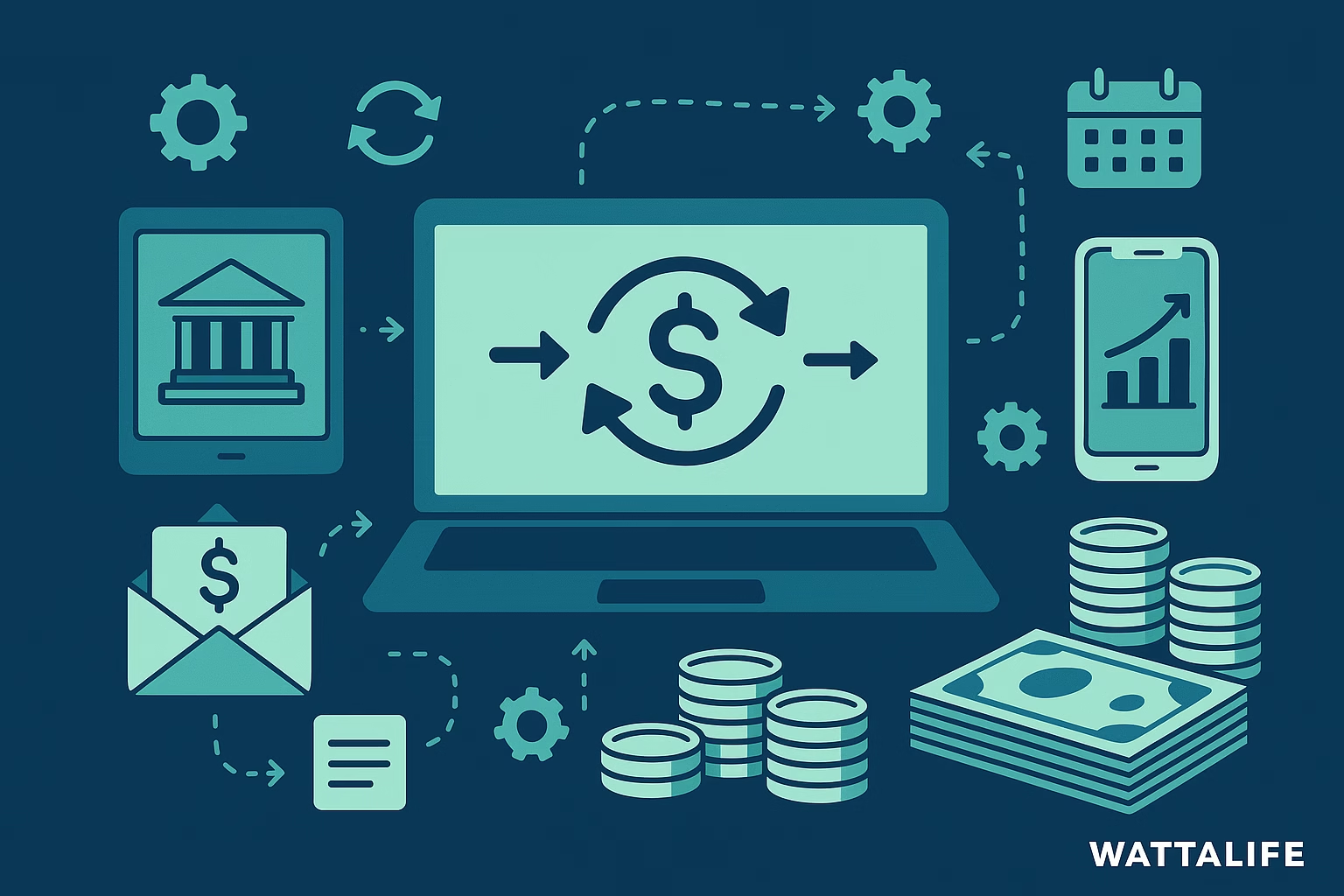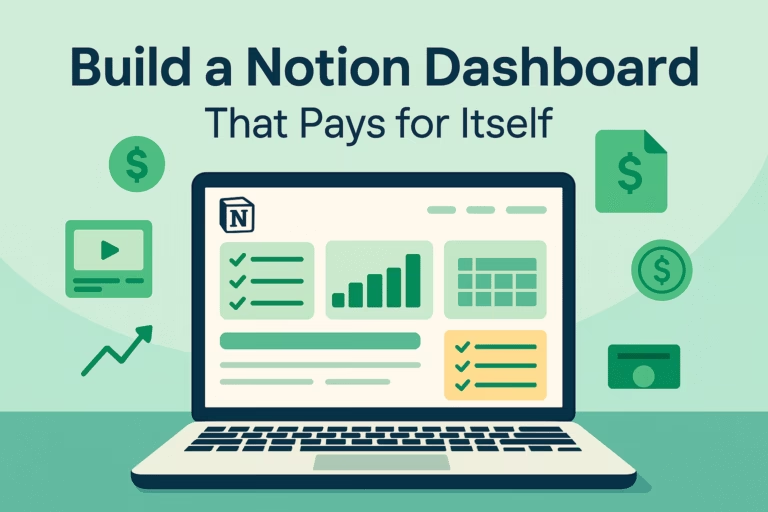Smart Income Systems: Automate Your Finances in 7 Days

Tired of bill stress, money leaks, and late payments? Here’s how to build an automated money system in a single week—so you can spend less time worrying and more time building your future-proof income streams.
Introduction to Financial Automation
In the contemporary financial landscape, individuals are increasingly turning towards financial automation as a viable solution to manage their monetary affairs more effectively. Financial automation refers to the process of employing technology to perform financial tasks and transactions without manual intervention. In an era characterized by hectic lifestyles and the constant pressure of meeting deadlines, automating finances is not just a convenience; it has become essential.
Many people encounter numerous challenges when managing their finances manually. Tasks such as tracking expenses, paying bills on time, and budgeting can often lead to significant stress. The intricacies involved in manual money management can result in errors, missed deadlines, and ultimately, financial instability. Stress from these activities negatively affects one’s quality of life, leading to a cycle of anxiety and further financial mismanagement.
The necessity of setting up automated financial systems has gained prominence as a means to regain control over personal finances. With financial automation, individuals can streamline their budgeting processes, automate bill payments, and gain valuable insights into their spending habits through advanced analytical tools. This not only saves time but also diminishes the likelihood of making costly mistakes. Furthermore, automation provides a greater level of accuracy and peace of mind, allowing individuals to focus on other essential aspects of their lives without the constant worry of financial oversight.
As we delve deeper into the mechanics of these smart income systems, it becomes clear that financial automation is no longer a luxury but a pragmatic approach to navigating the complexities of personal finance in today’s fast-paced environment. It empowers individuals to take charge of their financial well-being and fosters a sense of accomplishment in achieving their financial goals.
Key Takeaways
- Automating your finances puts bills, savings, and investments on autopilot.
- Eliminate missed payments, late fees, and “where did my money go?” moments.
- With the right tools, you only need to check in once a week (or less).
- Every income stream—side hustle, job, or passive—fits into this system.
- Peace of mind comes from systems, not hacks or willpower.
Problem: Manual Money Management Leads to Stress (and Mistakes)
Juggling paychecks, bills, transfers, and savings goals by hand is a recipe for burnout. One forgotten bill and you’re hit with a late fee—or worse, a dip in your credit score. Add in multiple income streams, side hustles, or changing expenses, and it’s easy to lose control.
Most people think “I’ll get organized one day,” but the best time to build an automated system is before things get busy—or before you lose an income stream.
Promise: Set Up Your Smart Money System in 7 Days—Then Let It Run
In one week, you can go from financial chaos to a streamlined, automated system. You’ll use simple tools (many are free) to route income, pay bills, save, invest, and track—all with minimal effort. No budget spreadsheets or apps required (unless you want them).
Day 1: Map Your Money Flows
- List every source of income (job, side hustle, freelance, passive streams).
- List every recurring bill (rent, utilities, phone, subscriptions, debt, insurance, etc).
- List savings, investing, or “fun money” goals.
- Example: Alex has a salary, freelance gigs, and Etsy sales. Bills include rent, car, phone, and streaming. Goals: $500/mo to savings, $200/mo to index funds.
- Draw this out on paper or use a free Canva flowchart template.
Day 2: Automate Income Routing
- Set up direct deposit for paychecks and all major side hustles (Uber, Etsy, Gumroad, etc).
- Route all income into one “hub” account—this is your command center.
- For variable or cash incomes, deposit weekly (no holding cash).
- Example: Alex routes salary, Upwork, and Etsy income to a free checking account at a digital bank with no fees.
Day 3: Set Up Automatic Bill Pay
- Turn on autopay for all bills from your hub account (use your bank, biller site, or credit card—whichever is safest).
- Set bills to hit just after your main income arrives. Spread due dates if needed (call providers and ask—they’ll usually help).
- Turn off paper mail—digital statements only.
- Example: Alex’s rent, car payment, phone, and Netflix are all on autopay through their bank.
Day 4: Automate Savings & Investments
- Set up automatic transfers: a fixed amount each week or month to savings, emergency fund, and investing accounts.
- Use “pay yourself first”—move money as soon as it lands.
- Example: Alex’s bank sends $125 every Friday to savings, and $50 to an IRA at Vanguard.
Day 5: Link a Bill Calendar & Reminders
- Sync bill due dates and transfers to a free Google Calendar, Notion dashboard, or app notification.
- Set “review” reminders: 1x/month, check your system for errors or changes.
- Example: Alex adds all bills and transfer dates to Google Calendar, gets a nudge on the 1st of each month.
Day 6: Automate Side Hustle & Variable Income
- Set up separate accounts or sub-accounts for each side hustle. Route funds there automatically (most banks let you set this up online).
- Automate tax withholding (send 20-30% to a “tax” savings bucket every time you get paid).
- Example: Alex splits freelance payments: 70% to spending, 30% to tax savings account.
Day 7: Test, Adjust, and Go Hands-Free
- Run your system for one week: let income hit, watch bills pay, savings transfer, and alerts fire.
- Check all statements for accuracy. Adjust dates or amounts as needed.
- After week one, set a 10-minute weekly check-in. Otherwise, let it run!
- Example: Alex’s system runs itself. They check in every Friday, tweak when life changes.
Common Automation Mistakes
- Overdrafting by setting payments too close to payday. Leave a 2–3 day buffer.
- Ignoring account fees—use fee-free banks or credit unions.
- Forgetting to adjust for new bills, income, or life changes—set reminders to review.
- Relying on only one income stream—if it stops, the system fails.
Best Tools & Resources
Why Automation Is Your Edge (Now and for AI Future)
The more you automate, the less you react—and the more you can focus on growing income, learning, and adapting to AI-driven changes. Smart income systems keep your financial life steady, no matter what’s next.
Wattalife’s systems-first approach lets you stress less, save more, and build wealth in any economy.
Want My 7-Day Automation Checklist?
Subscribe to Wattalife Weekly—one new automation tip or template every Friday. Join now and get my 7-Day Finance Automation Checklist free!
No spam. Just smarter income systems, right to your inbox.Conclusion: The Peace of Mind That Comes with Automated Finances
As we have explored throughout this blog post, the implementation of smart income systems can drastically transform the way one manages their financial responsibilities. Automating finances has proven to be more than just a convenience; it offers a degree of peace of mind that is invaluable in today’s fast-paced world. One of the primary benefits is the significant reduction in the stress associated with manual money management. By setting up automatic payments and savings, individuals can eliminate the fear of missed deadlines and late fees, allowing for a more tranquil financial experience.
Moreover, utilizing automation enables better budgeting and tracking of expenses, which ultimately leads to heightened financial awareness. With automated systems in place, individuals can focus on their financial goals without the constant worry of daily management tasks. The peace of mind created through these automated processes can free up mental space, allowing for greater focus on other priorities such as family, career, or personal development.
Furthermore, building an automated financial system fosters a proactive approach to personal finance. This not only creates a more organized financial life but also sets the stage for long-term financial health and success. It empowers individuals to take control of their financial future, ensuring that funds are allocated efficiently and effectively. The key takeaway here is that by embracing automation, you are investing in your financial well-being.
As we conclude, it is time to take charge and start implementing these smart income systems. The road to financial freedom begins with a single step toward automation. Embrace the ease and success that comes with automated finances, and allow yourself the peace of mind that follows. Start today, and experience the transformative benefits of automating your financial life.






